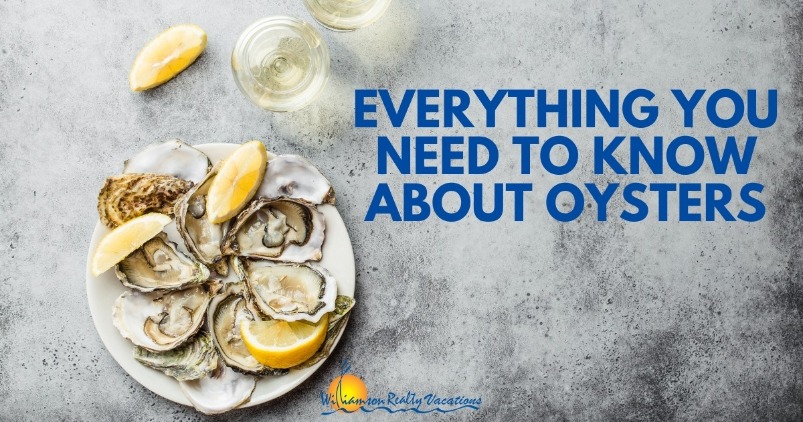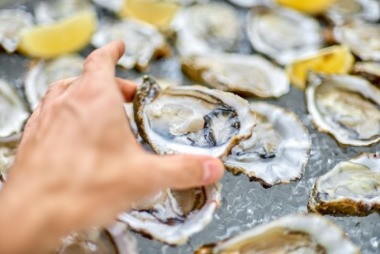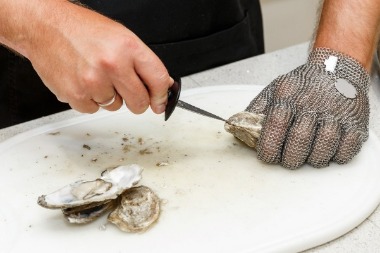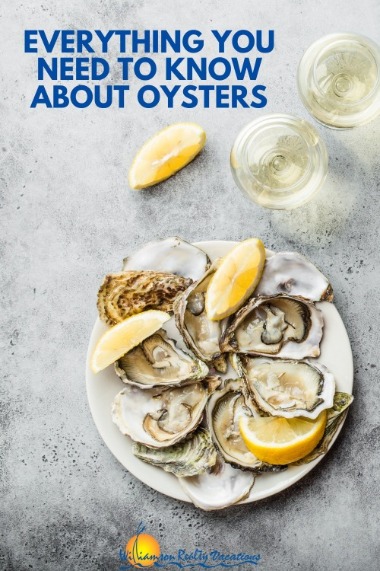
Fall is here and what a wonderful time of year it is on Ocean Isle Beach. The weather is perfect, the water is still warm and best of all, oysters are on the menu! This week we have something you can add to your fall vacation menu…all things oyster! So, fire up the computer, get out the calendar and let’s start planning your fall Ocean Isle Beach vacation.
A little background about oysters
Have you ever really thought about oysters? The delicious and wonderfully unique oyster is something many of know little about, even those of us who love eating them by the bushel or the peck. Here’s a little background on the lovely, delicious oyster.
Blue collar delicacy.
Did you know that the same oyster that is now one of the more expensive things on many menus was once a lowly dish of the working class? In fact, oysters were considered something the wealthy wouldn’t even consider eating. At that time (in the early 19th century) on any given day you could find barges in the New York harbor loaded with over six million oysters. Now, that is a lot of oysters.
Oysters are important.
Oysters live in salty or brackish waters on all U.S. coasts, clustering on older shells, rocks, piers, or any hard, submerged surface. They fuse together as they grow, forming rock-like reefs that provide a habitat for other marine animals and plants.
Where do they come from?
Do you ever wonder where oysters come from? Many people are confused about where exactly oysters come from. So were we.
Oysters begin life as free-floating larvae—tiny, swimming creatures. Before long, they settle down and attach to a solid surface where they will grow for the rest of their lives. Rocks, old shells, wrecks, and piers accumulate oysters that grow together, shell upon shell. As the reef takes shape, it becomes excellent shelter for other sea life.

Five tips for buying oysters

Five tips for shucking oysters like a pro
Six fun facts about oysters
- Gender change- One of the most interesting oyster facts is that oysters change their sex during their lives, starting as males and usually ending as females.
- Oysters change shape-Once an oyster attaches to a bed (a surface occupied by a group of oysters), it grows and forms around the surface it attaches to as well as the other oysters around it.
- The pearls-All oysters are capable of producing pearls, but not the shiny, pretty pearls of value. In fact, most pearls are harvested from an inedible type of oyster as well as from freshwater mussels.
- Oyster flavor-Although most American oysters are the same species, they have different flavors. Because oysters filter so much water, they develop a flavor profile from their environment. Different bodies of water have varying levels of salt and different kinds of nutrients.
- Oyster are full of vitamins– Oysters contain a variety of vitamins and nutrients including zinc, calcium, magnesium, protein, selenium, and vitamin A. They also contain especially high levels of vitamin B12, iron and monounsaturated fat – the “healthy” kind of fat that you also find in olive oil.
- A fan favorite for a 1,000 years-Oysters have been eaten by humans since prehistoric times and cultivated at least since the times of the Roman Empire. The Roman Sergius Orata was the first person known to cultivate oysters by building a system that could control water level.
Are you ready for a wonderful fall Ocean Isle Beach vacation filled with Carolina sunshine and oysters? If you are, now is the perfect time to book your next Ocean Isle Beach vacation. Check out our fall specials by clicking here! If you would like to speak with one of our friendly and knowledgeable reservationists give us a call at 800-727-9222 or click the button below to see all of our vacation homes.
Book your Ocean isle Beach Vacation today
Like and follow us on Facebook.



